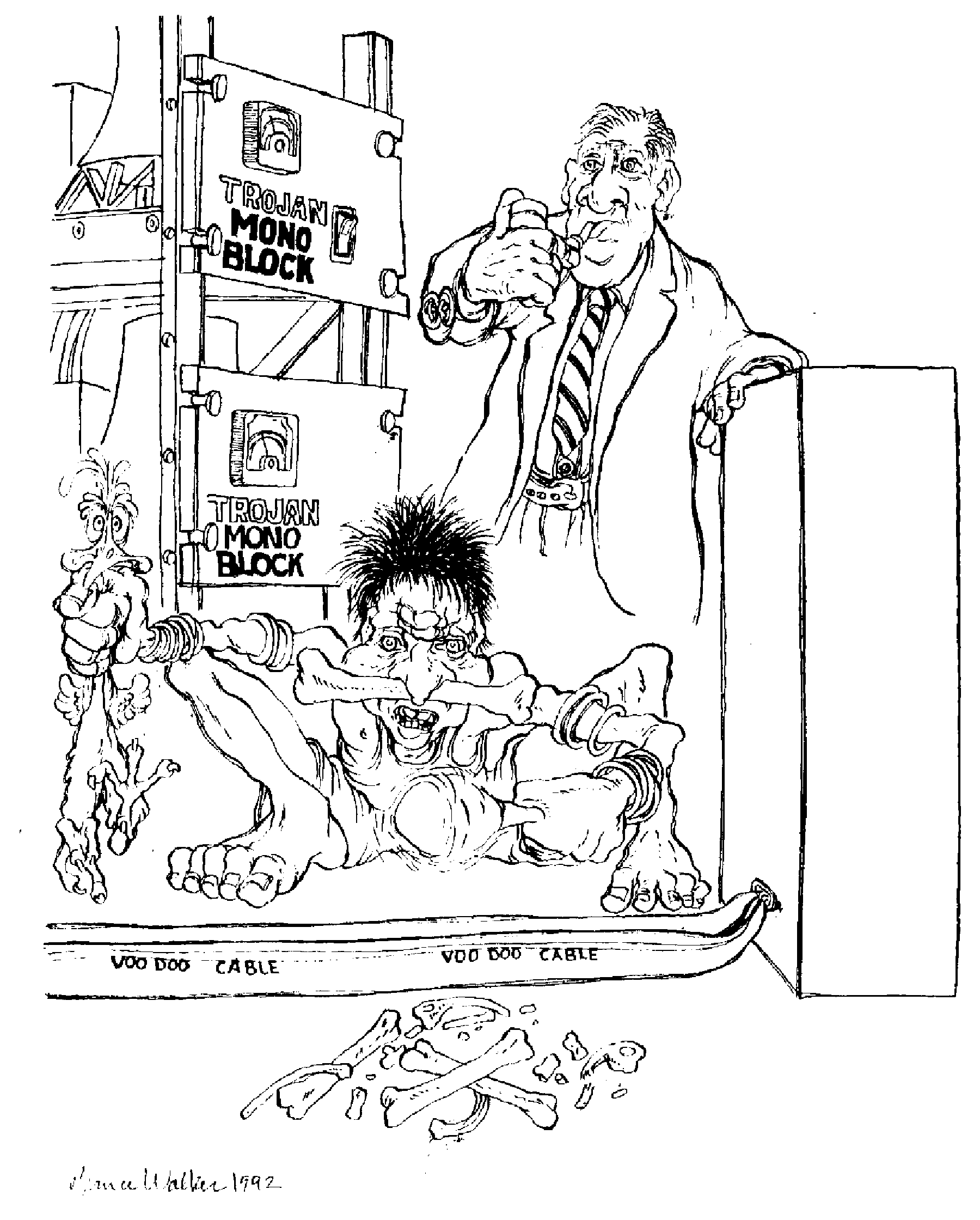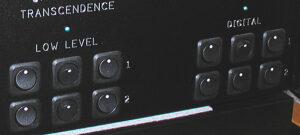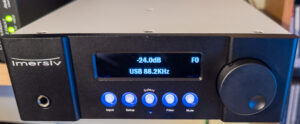Enid Lumley, the long-ago first female reviewer for The Absolute Sound, was possibly a little over the top, but at least a major portion of her observations were dead on.
She was right, for example, in thinking that lifting speaker cables off the floor (she ran them over short pieces of two-by-four) would improve the sound of her system. It has to do with the Inverse Square Law and with the dielectric effects of air as compared with flooring. She was also right in thinking that the connectors in her Hi-Fi system would sound better if she scraped the gold plating off them. The gold is only put there to protect the much more conductive copper or brass they're made of from tarnishing or corroding, and her ears were good enough that she could hear the difference.
She was probably even right—at least up to a point—when she said to take the dust cover off your turntable when you're playing records. The sound from your speakers can make it vibrate along with the music and can, if it gets loud enough, result in anything from audible to unlistenable levels of acoustic feedback. Her idea of replacing the plastic dust cover with a cloth tent was good, too, if you didn't mind the looks of it. And even wetting it to lower its acoustic resonant frequency might have been a good idea. Her insistence, though, on using only distilled water for that purpose does seem to be more than just a little bit beyond the pale.
Even so, the basic point is well taken: little stuff can make a big difference.
Here's another example:
Some years ago, I sent one of my favorite preamps back to the factory for maintenance and an upgrade, including some new capacitors. In the process of that, the designer, a friend of mine who was experimenting with different kinds of chassis wiring at the time, told me that he was considering changing from copper to pure silver wiring from the preamp's circuit boards to its RCA output jacks—a total length of just about 2" for each run.
He told me that he was going to try that on some test units and asked if I would like him to change the wiring on mine, too. Thinking that it was such a short length that it couldn't possibly hurt anything, and that—because silver is a less resistive conductor than copper—it might even sound better, I agreed and told him to make the change. He did, and when the work was completed, he returned my now modified preamp to me, asking that I report back to him on what I heard.
After a few days of listening to make sure the changes had been thoroughly burned in and that the preamp was sounding as good as it was going to get, I called him and told him that, whatever he had done—the caps or the wiring, or both—my preamp now sounded distinctly worse. Where it had previously been clean, pure, and marvelously detailed, it was now "etched-sounding" and seemed to add a "shiny or silvery" patina to everything it played. That, it turned out, was exactly what he had heard on his own test units and, saying that it was not the new capacitors but those short lengths of silver wire that were causing the problem, he told me to send the preamp back to him so he could change the board-to-RCA jumper wires back to what they had originally been.
That was from just one 2" length of wire in each channel of an otherwise superb preamp.
Something involving similar concerns happened just recently. An audiophile friend contacted me to ask about a new tonearm that he was considering. Instead of the more popular way of building an arm, with provision for the use of a separate tonearm cable, either with a DIN connector or with RCAs for carrying the phono cartridge's output to the preamp, the arm he was interested in has its own, permanently attached cable.
According to him, the manufacturer is claiming that the cable they use is a specially designed silver hybrid, and that, by having it permanently attached, it eliminates the need for plug-in connections and will therefore just naturally sound better. What he wanted to know was if that was true and, if so, how likely it was that the improvement would be significant.
Here's the essence of what I told him, changed only slightly for clarity, to maintain confidentiality, and to guard the manufacturer's name:
"As to integrated cables, a number of things come to mind: The first is that, even with the cable hard-wired to the tonearm, the signal is still going to have to pass through at least two connector sets per channel—the clips onto the cartridge pins and the RCAs or other connectors going into the preamp. 'Integrating' the cable with the arm can only remove one connector set per channel from the system—either the DIN connector or the RCAs connecting to the actual tonearm wire. All others will still remain.
Another thing that it will remove is the option of changing cables, unless you want to do some rewiring or add back the missing connector(s). How much of a difference will that make? I don't know; too many other factors are involved to make any general statement about the particular arm and the cables you're considering. I do know, though, that seemingly tiny changes can make clearly audible differences.
I obviously have no knowledge of what the manufacturer you named is using in their cables or how they're constructed, but the thought that it involves silver troubles me. Neither XLO nor RSX ever has, or ever will, use silver in any of their high-performance cables, for just the sonic reason I described above, [NOTE: I had already told him the preamp story earlier in my letter to him], and silver-plated copper, because it can result in noticeable skin-effect phase-shift, can be even worse. I do admit, though, that there are people who like "silvery-sounding" cables, and it all may (other than the fact of phase-shift) simply be a matter of taste.
Because of that, and because tastes can change, I would personally always opt for the ability to easily change cables. I'm in the cable business, though, and you should bear in mind that that might bias my point of view."
Just remember that practically anything—even small wire changes can change the sound of your system, and enough small changes can make a big difference.
The little stuff counts.









































